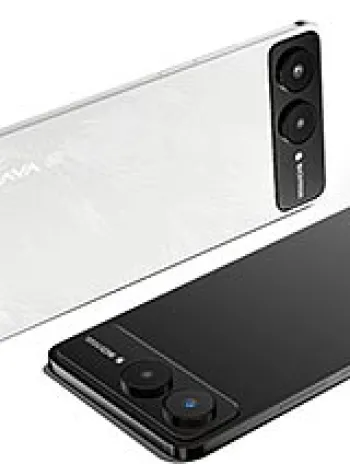
Overview
The Lava Iris 349+ is a budget-friendly smartphone that was released in July 2013. Although it was discontinued shortly thereafter, it still holds significance for those looking into the evolution of mobile technology in the early 2010s. The device was tailored to suit users looking for a basic smartphone experience. Here, we delve into its design, specifications, and overall performance.
Design & Build
The Lava Iris 349+ exhibits a straightforward design, typical of entry-level smartphones from that time period. Measuring 115 x 61.5 x 13.3 mm and weighing just 115.4 g, the phone was easy to handle and fit comfortably in users' hands. The device came with a dual SIM capability, catering to those who needed to manage two different numbers or separate professional from personal life. Available in brown and cool gold, its color options added a bit of flair to the traditional aesthetic.
Display
The phone features a 3.5-inch TFT display that presents 256K colors. While the display resolution of 320 x 480 pixels (~165 ppi density) does not match up to modern standards, it was quite sufficient for basic operations and suited the needs of its target audience. The screen design covered approximately 51.6% of the device's front, making it a modest screen for visual interaction, be it messaging or basic multimedia.
Platform, Performance, and Storage
Under the hood, the Lava Iris 349+ is powered by a 1.0 GHz CPU, enough for everyday tasks like calling, texting, and occasional web browsing. It ran on Android 2.3 Gingerbread OS, which was contemporary during its release but is now far obsolete. The device's internal storage was limited to 512MB with 256MB RAM. However, users could expand storage using the microSDHC slot, increasing the phone's capacity for storing additional apps and media files.
Camera
The phone is equipped with a 2 MP rear camera, capable of taking basic photos and capturing video. While it lacks a front camera, which today might seem like a significant drawback, its main camera sufficed for the undemanding photography needs of casual users during its time.
Sound & Connectivity
In terms of sound, the Lava Iris 349+ was equipped with a loudspeaker and included a 3.5mm headphone jack, a standard feature for many phones even today. Connectivity options were aligned with early smartphone technology, offering Wi-Fi 802.11 b/g/n, Bluetooth, GPS, and even FM radio for entertainment on the go. Absent was the NFC feature, but USB connectivity was possible through its proprietary connection.
Battery Life
The device comes with a removable Li-Ion 1400 mAh battery. While not large by today's standards, this battery offered up to 250 hours of standby time and around 5 hours of talk time, providing a decent balance between usage and recharging needs. This was adequate for users engaging in moderate phone activity throughout the day.
Network Capability
The Lava Iris 349+ supported GSM technology and was compatible with 2G bands, specifically GSM 900 and 1800 for both SIM cards. This was sufficient for basic telecommunication and edge-level mobile data needs at a period when 3G and 4G were not yet extensive.
Conclusion
In conclusion, the Lava Iris 349+ represents the entry-level smartphone market in the early 2010s, offering basic functionality that served beginners and those with straightforward mobile requirements. Though lacking in advanced features, it provided essential services that met basic communication and multimedia needs at an affordable price of around 40 EUR. The device now serves as a nostalgic reminder of how mobile technology has evolved and the pathways leading to today's sophisticated smartphones.
Key Features of Lava Iris 349+
- Dual SIM support for using two networks simultaneously.
- Lightweight body at just 115.4 g for easy portability.
- 3.5-inch TFT display, offering 256K colors for vibrant viewing.
- Powered by a 1.0 GHz CPU, providing decent performance for basic tasks.
- Expandable storage via microSDHC card slot.
- 2 MP main camera for capturing basic photos.
- FM radio to enjoy music and broadcasts on the go.
- Wi-Fi 802.11 b/g/n connectivity for wireless internet access.
- Bluetooth capability for wireless data exchange.
- GPS for navigation and location-based services.
- Affordable price point of about 40 EUR.
Drawbacks of Lava Iris 349+
- Outdated Operating System: Runs on Android 2.3 (Gingerbread), which is outdated and lacks support for modern applications.
- Limited Memory: Comes with only 512MB internal storage and 256MB RAM, restricting multitasking and storage capacity.
- Poor Display Quality: Low-resolution display at 320 x 480 pixels with a density of only ~165 ppi.
- Weak Camera: Features a single 2 MP main camera with no front-facing/selfie camera.
- No NFC Support: Lacks Near Field Communication (NFC) feature, limiting contactless transaction capabilities.
- Limited Connectivity: Only supports 2G network technology, which can affect internet speed and connectivity.
- Proprietary USB: Uses a proprietary USB connector instead of the more common Micro USB or USB-C.
- Discontinued Model: The device has been discontinued, which may lead to difficulties in finding support or replacement parts.

View Also
More Phones
All Rights Reserved +14266 Phones © Mobilawy 2025

























